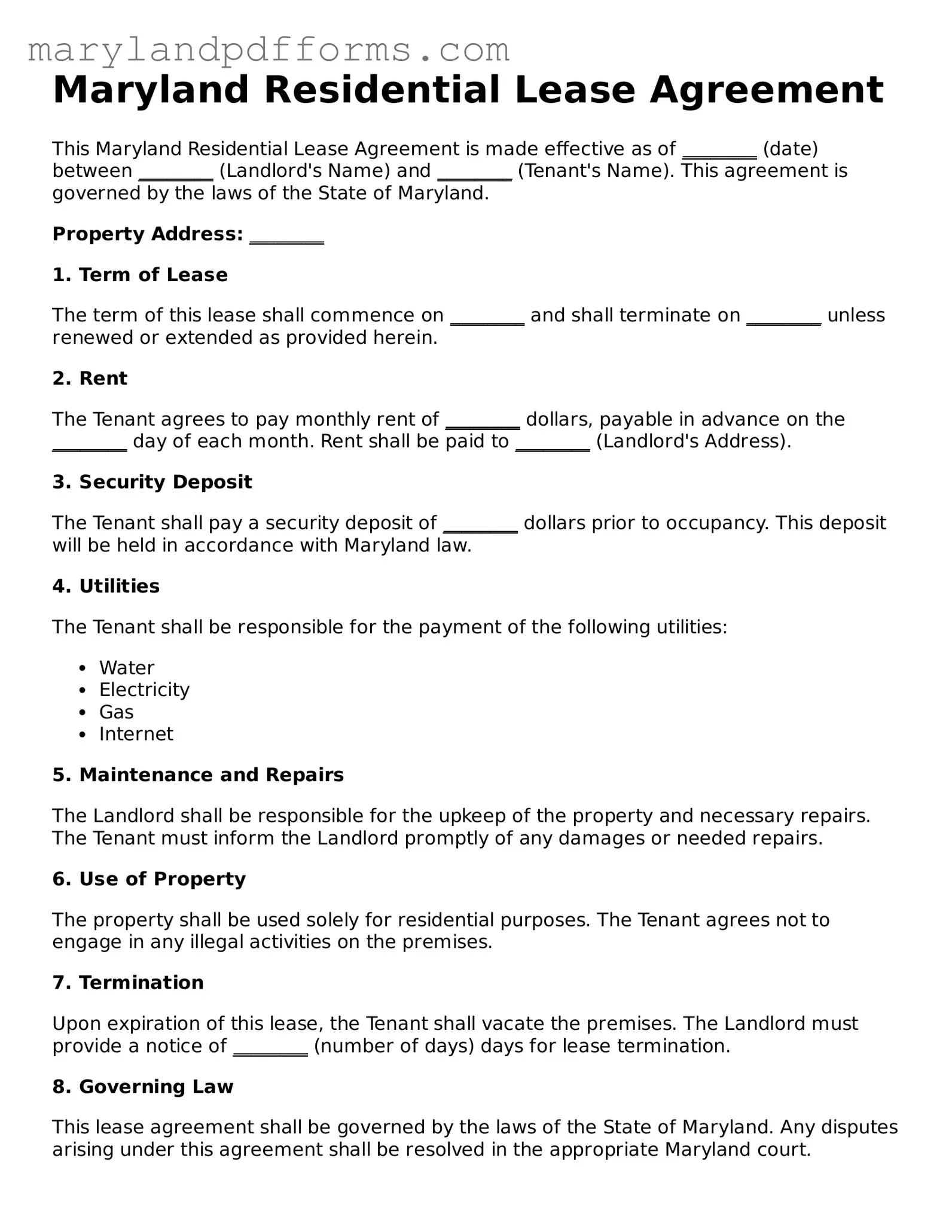What is a Maryland Lease Agreement?
A Maryland Lease Agreement is a legally binding document that outlines the terms and conditions between a landlord and a tenant for renting residential or commercial property in Maryland. This agreement specifies the rights and responsibilities of both parties, including rent amount, payment due dates, security deposits, and maintenance obligations.
What are the key components of a Maryland Lease Agreement?
The key components typically include:
-
Names of the landlord and tenant
-
Description of the rental property
-
Lease term (duration of the lease)
-
Rent amount and payment schedule
-
Security deposit details
-
Maintenance and repair responsibilities
-
Rules regarding pets, smoking, and other activities
-
Termination clauses and notice requirements
How long is a typical lease term in Maryland?
Lease terms in Maryland can vary widely. Common terms include one year, six months, or month-to-month arrangements. The length of the lease should be clearly stated in the agreement to avoid any misunderstandings.
Is a security deposit required in Maryland?
Yes, landlords in Maryland often require a security deposit. The maximum amount a landlord can charge is typically equivalent to two months' rent. This deposit is meant to cover potential damages or unpaid rent and must be returned to the tenant within 45 days after the lease ends, minus any deductions for damages.
Can a tenant break a lease in Maryland?
Yes, tenants can break a lease, but there may be consequences. Depending on the terms of the lease, tenants might be responsible for paying rent until a new tenant is found or until the lease officially ends. Certain circumstances, such as domestic violence or military deployment, may allow tenants to terminate the lease without penalty.
What happens if the landlord does not make necessary repairs?
If a landlord fails to make necessary repairs, tenants may have several options. They can notify the landlord in writing, request repairs, and allow a reasonable time for completion. If repairs are still not made, tenants may have the right to withhold rent or make repairs themselves and deduct the cost from future rent, depending on Maryland law.
Are there specific laws regarding eviction in Maryland?
Yes, Maryland has specific laws governing the eviction process. Landlords must follow legal procedures, which typically include providing written notice to the tenant and filing an eviction lawsuit if the tenant does not vacate the property. Evictions cannot occur without a court order.
Can a landlord raise the rent during a lease term?
Generally, landlords cannot raise the rent during a fixed-term lease unless the lease agreement specifically allows for it. For month-to-month leases, landlords can increase rent but must provide proper notice, usually 30 days, before the increase takes effect.
What should a tenant do if they have a dispute with their landlord?
In the event of a dispute, tenants should first attempt to resolve the issue directly with the landlord. If this approach does not yield results, tenants may seek mediation or legal advice. Documenting all communications and agreements can be helpful in resolving disputes.
Where can I find a Maryland Lease Agreement template?
Maryland Lease Agreement templates can be found online through various legal websites, real estate associations, or local government resources. It is advisable to review any template carefully and consider consulting a legal professional to ensure it meets specific needs and complies with Maryland law.
